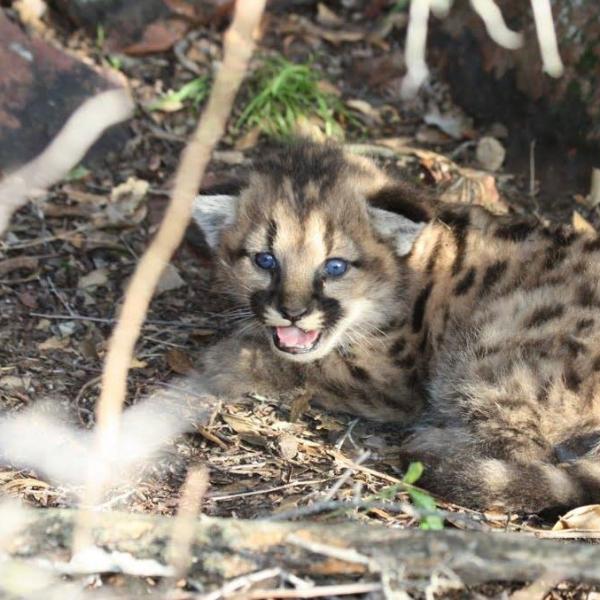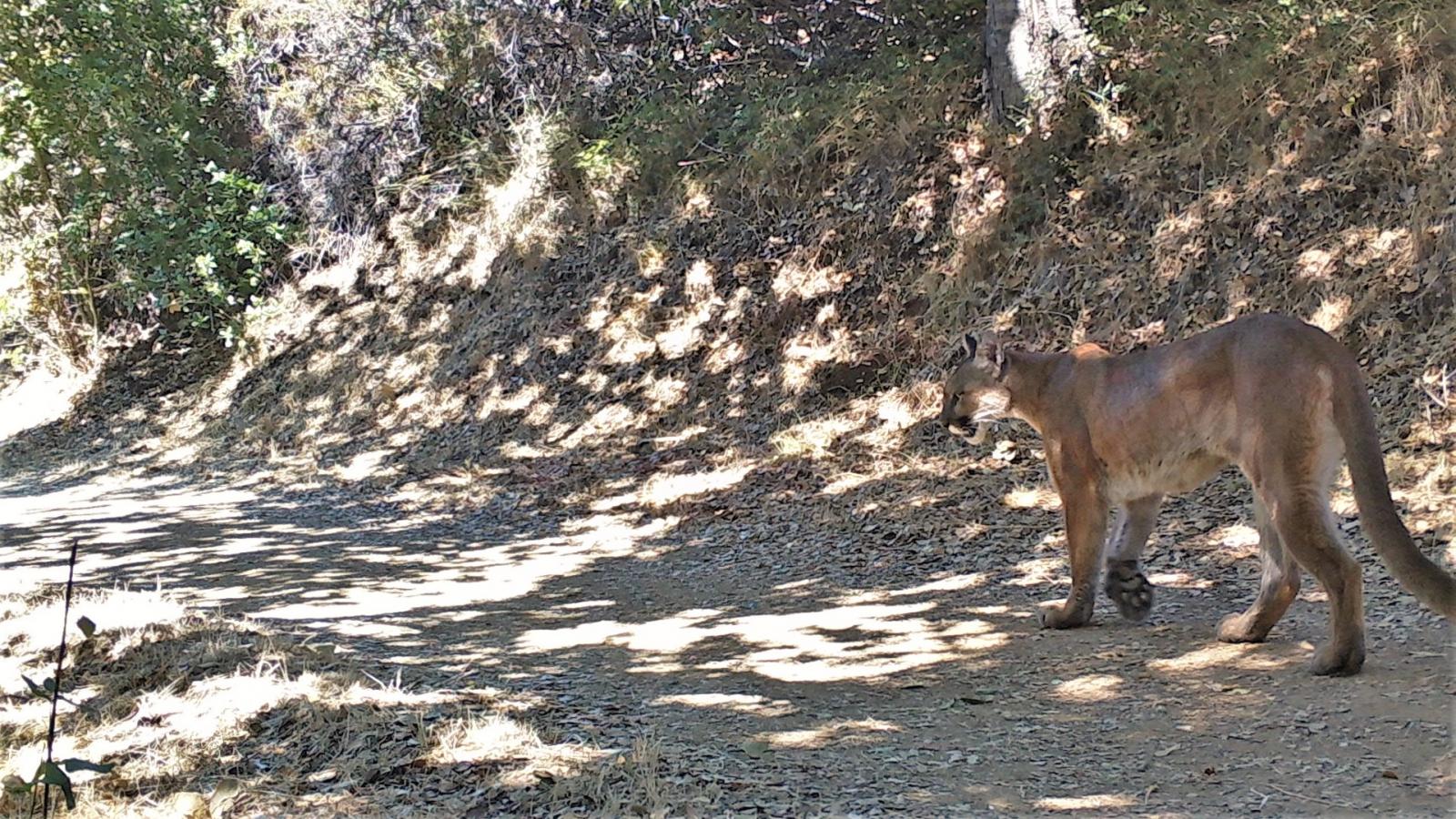Mountain lions, also known as pumas and cougars, play an important role as predators in our local ecosystem. Their primary food source is deer, but they can also prey on smaller animals like raccoons, rabbits. Occasionally, they opportunistically prey on domestic pets and livestock. More than half of California, including most of undeveloped San Mateo and Santa Clara counties, is prime mountain lion habitat. Mountain lions are a specially protected species in California.
Mountain lions face many challenges. They need large habitats, and as open space in the Santa Cruz Mountains has become hemmed in by roads and development, some are pushed into the wildland-urban interface. This is one reason why wildlife corridors like Midpen's Highway 17 Wildlife and Trail Crossing, are critical for allowing wildlife to move safely across the landscape to access the resources they need to survive.

Stay Safe in Mountain Lion Country
- Stay alert when visiting a preserve.
- Do not hike, bike or jog alone.
- Avoid hiking or jogging when mountain lions are most active – dawn, dusk, and at night.
- Keep a close watch on small children.
- Do not wear headphones.
If You Encounter a Mountain Lion
If you encounter a mountain lion, take these safety precautions:
- DO NOT RUN!
- Keep children and pets close.
- Do not approach the lion.
- Do not turn your back on the lion.
- Do not crouch down or bend over.
- Stand tall, face the animal, make noise and try to look bigger by waving your arms or throwing objects.
- Leave the area and inform other preserve visitors of the potential danger.
- If attacked, fight back.
- Report sightings immediately to 650-691-2165.
Identification
The mountain lion has a small head and small rounded ears. It has a very long tail that is about 2/3rds the length of its body.
- Color: Generally tan, but can range from gray to brown, with a whitish underside. The ears and tail are tipped with black. Cubs have camouflage spots that fade as they mature.
- Size: Adult males can reach 8 feet in length from nose to tail; and weigh 130-150 lbs. Adult females can reach up to 7 feet in length and weigh 65-90 lbs.
- Tracks: Unlike a dog, mountain lions don’t leave a nail mark and their pads are shaped like the letter M.
- Behavior: Adult pumas are solitary and territorial animals. Males can have territories up to 100 square miles and females’ territories can range up to 60 square miles. They are most active between dusk and dawn, and generally avoid contact with humans, but have been known to stand their ground.


In the densely populated Bay Area, Midpen preserves provide critical remaining habitat for native wildlife, such as mountain lions and nearby nature for people. Midpen is conducting mountain lion conservation research to learn more about how mountain lions use open space lands also frequently visited by people. The results will help guide Midpen’s science-based land management practices.
Mountain Lion Activity at Rancho San Antonio
Mountain lions have been observed in Rancho San Antonio Open Space Preserve. Though seldom seen, they also roam most Midpen preserves.

Coexisting with Cougars Video Presentation
Learn all about mountain lions with Midpen Resource Management Specialist Matt Sharp Chaney. Matt provides an overview of mountain lion biology, habitat and research. He also shares how hikers, families and neighbors can stay safe in mountain lion habitat.

Midpen’s nearly 70,000 acres of preserved public open space provide prime habitat for mountain lions, a top predator in our region facing many challenges in our region. We’re working to protect regional mountain lion populations by preserving habitat, increasing habitat connectivity through the Highway 17 Wildlife Crossing Project, promoting rodenticide regulations and supporting research that improves our understanding of lion populations, ecology and behavior throughout our region of influence.

